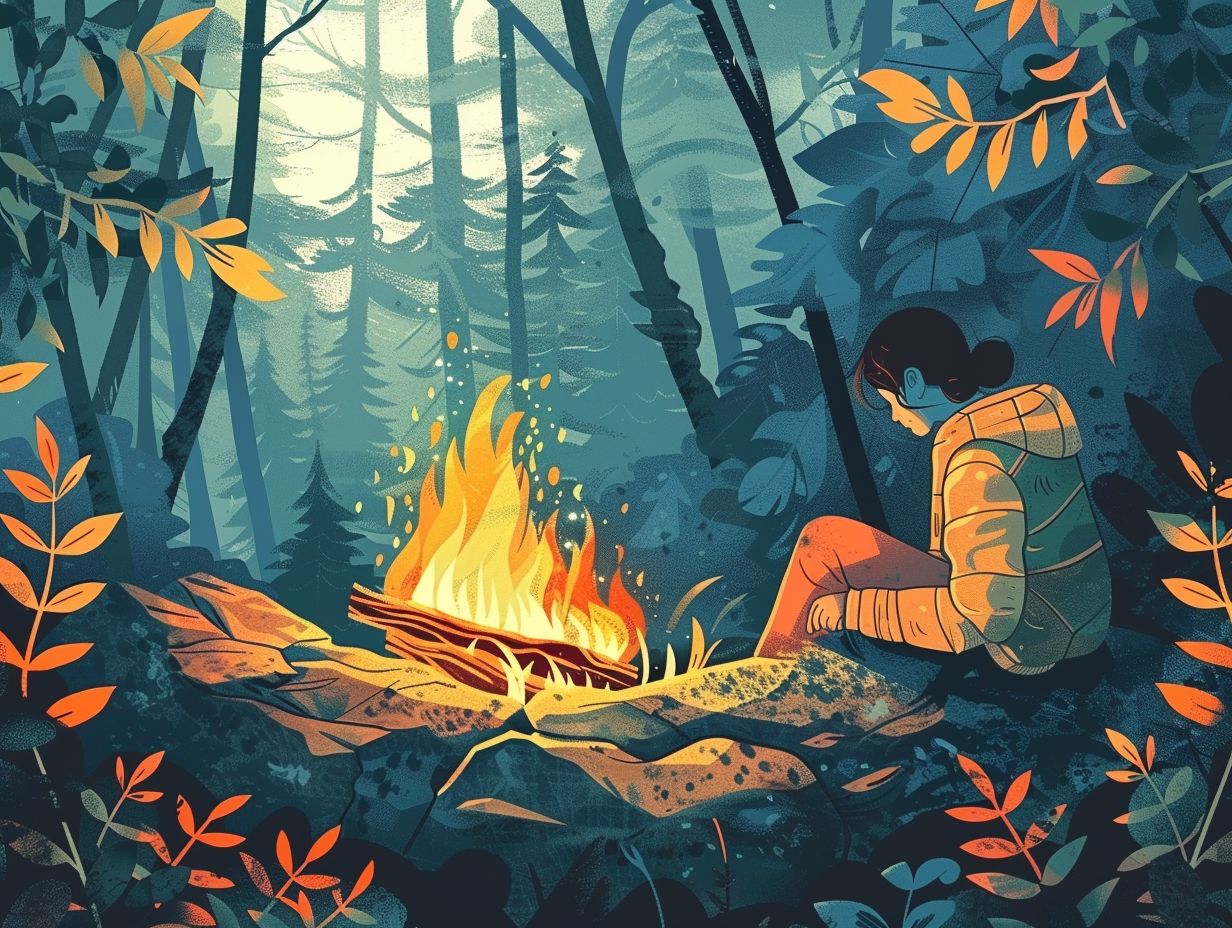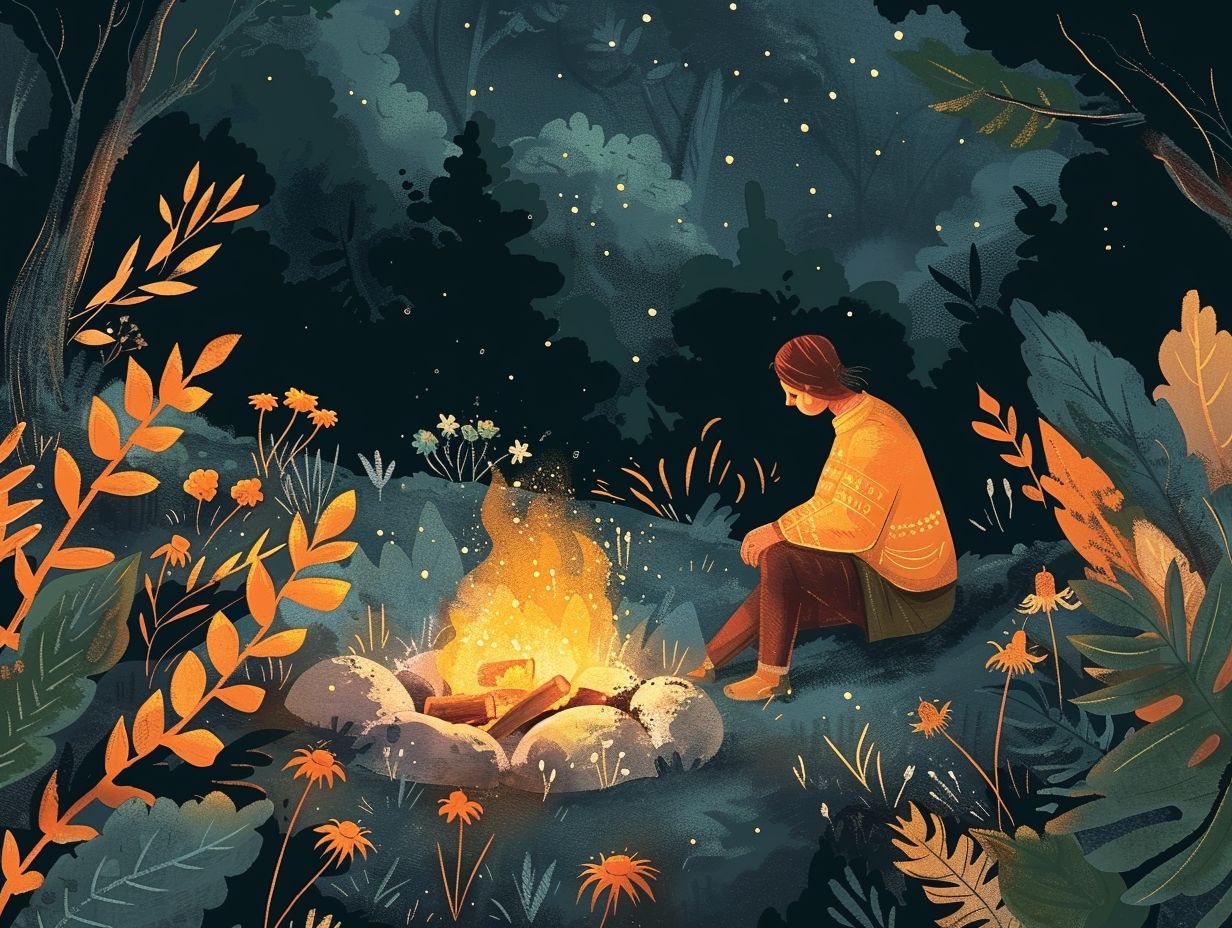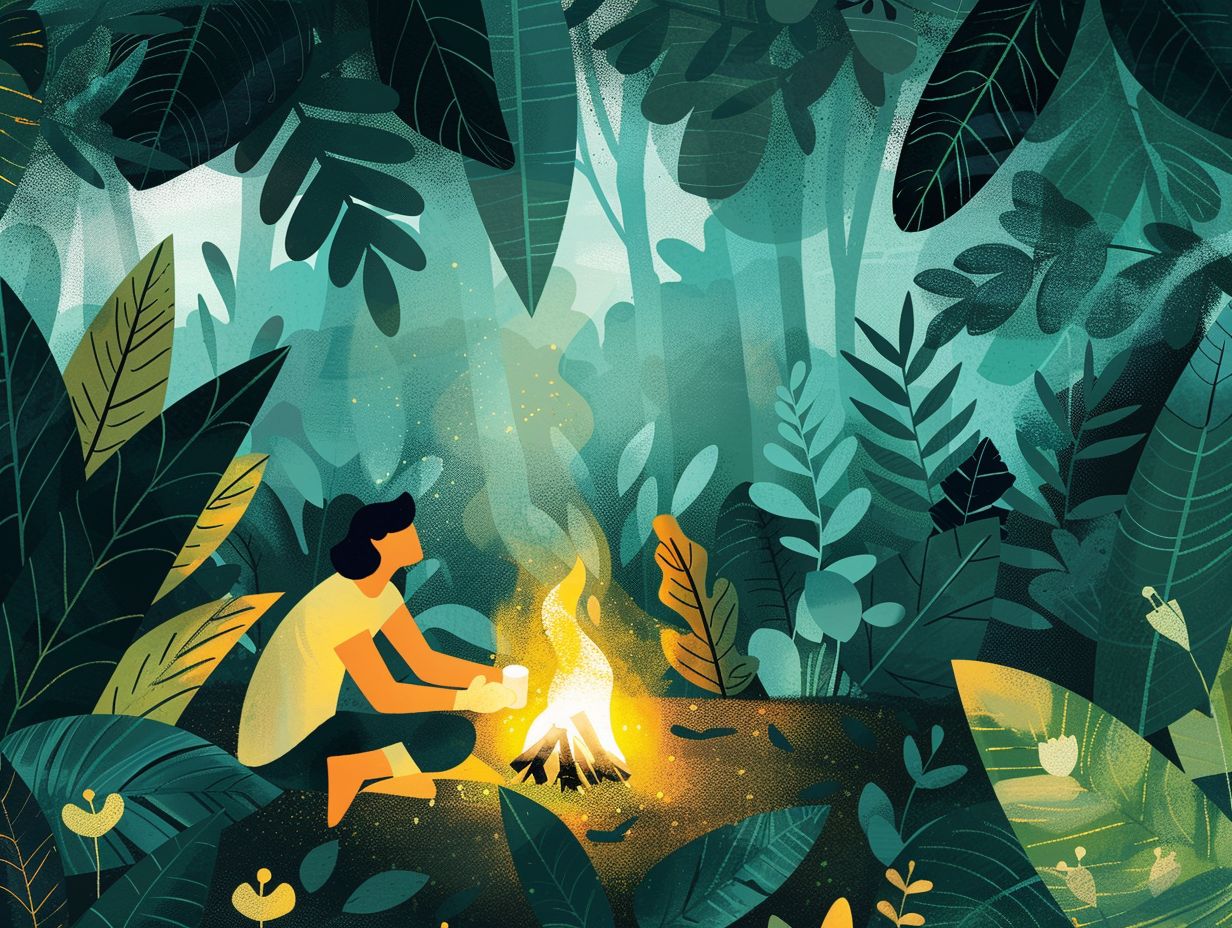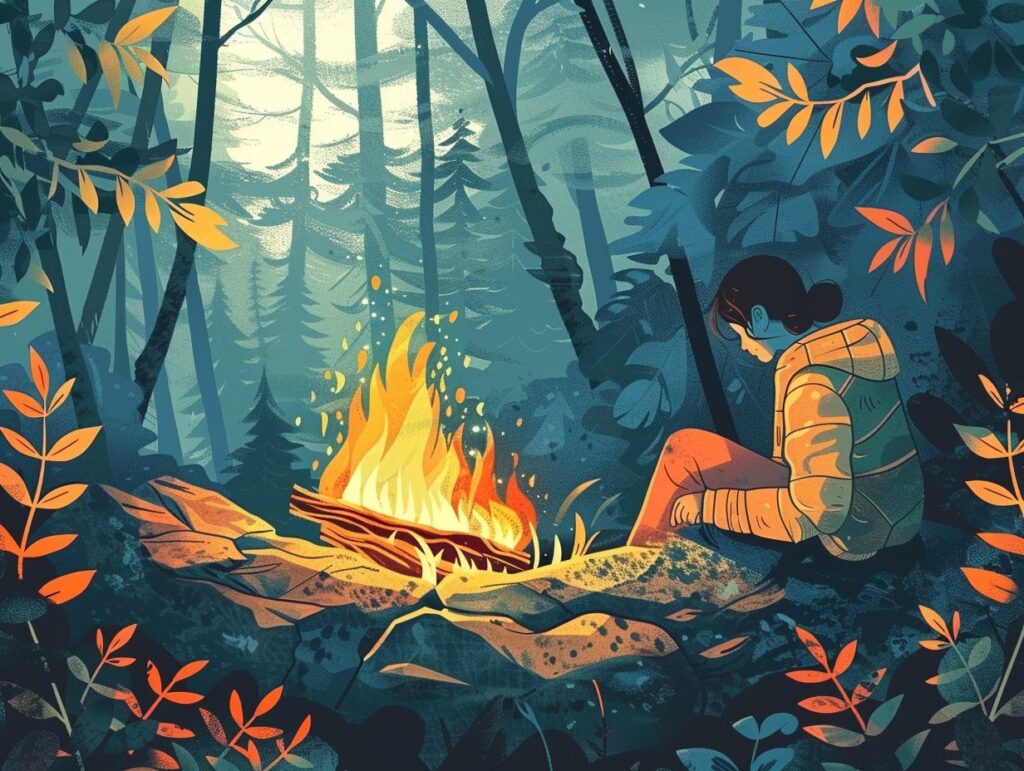Are you ready to master the art of building the perfect campfire?
In this comprehensive guide, we will explore the basic materials needed for a campfire, the different types of campfires you can create, safety precautions to take, and step-by-step instructions on how to build a campfire.
Whether you’re a seasoned outdoor enthusiast or a novice camper, this article will provide you with the knowledge and skills to safely and effectively enjoy the warmth and ambiance of a campfire.
Key Takeaways:

- Always check for fire restrictions before building a campfire and choose a safe location with no flammable materials nearby.
- Gather tinder, kindling, and fuel before starting to build the fire, and use proper techniques such as the teepee or log cabin structure for optimal results.
- Be sure to have a bucket of water nearby and fully extinguish the fire before leaving the site to prevent any potential danger or damage to the environment.
What Are The Safety Precautions To Take When Making A Campfire?
Ensuring safety is of paramount importance when establishing a campfire. Adhering to safety guidelines provided by reputable organisations such as CAL FIRE and the U.S. Forest Service is crucial for wildfire prevention and promoting a secure outdoor environment.
1. Check Fire Restrictions
Always ensure to check for fire restrictions at campsites and secure a campfire permit if necessary, as the risk of wildfires can vary significantly depending on prevailing conditions.
Understanding the regulations and obtaining permits before initiating a campfire is essential for preventing forest fires and safeguarding natural habitats and wildlife.
It is crucial to monitor fire restrictions diligently to maintain the safety of both campers and the environment. These regulations are typically implemented based on various factors such as recent weather conditions, the dryness of the area, and the overall fire hazard level.
Remaining well-informed about current restrictions can be achieved by reaching out to local land management agencies or by accessing their websites for real-time updates.
2. Choose A Safe Location
Selecting a suitable location for your campfire is imperative. It is recommended to choose a safe spot, such as a designated fire pit, positioned away from overhanging branches and shielded from the wind. Furthermore, it is crucial to ensure that the ground is devoid of any dry leaves, grass, or vegetation that could easily ignite.
Opting for an open area where the flames can be contained is prudent. It is also advisable to evaluate the proximity of the campfire to tents or other flammable materials to mitigate the risk of accidents.
Maintaining awareness of the surroundings and potential hazards can effectively prevent injuries and mitigate the risk of wildfires. It is paramount to prioritise safety when determining the location for your campfire.
3. Clear The Area

Before initiating a campfire, it is imperative to clear the surrounding area of any debris, leaves, or flammable materials to establish a safety zone. This initial action is essential in ensuring a secure and regulated environment while partaking in the warmth and ambiance of a campfire.
The removal of flammable materials plays a vital role in reducing the likelihood of accidental fires spreading beyond the designated area, thereby mitigating the risks associated with wildfires and potential injuries.
The creation of a clear space around the campfire serves to prevent sparks or embers from igniting nearby objects or vegetation, consequently guaranteeing a contained and secure setting for your outdoor experience.
Emphasising safety protocols, such as this, not only protects the immediate surroundings but also advocates for responsible outdoor practices, enhancing the overall camping experience.
4. Keep A Bucket Of Water Nearby
It is advisable to have a bucket of water or a fire extinguisher readily available for use in case of emergencies to ensure prompt and effective response to fires.
If there is a fire, timely action is critical. When a small fire occurs, it is important to immediately access the water bucket or fire extinguisher. For fires fuelled by solid materials such as wood or paper, using water can effectively extinguish the flames.
However, in the case of a grease fire, water should not be used as it can exacerbate the situation. In such instances, a fire extinguisher should be utilised by directing it at the base of the flames and sweeping from side to side.
Before an emergency situation, it is essential to familiarise oneself with the operation of the fire extinguisher by reading the instructions provided. This ensures that individuals can respond promptly and with confidence in the event of a fire.
5. Extinguish The Fire Completely
Before setting off or going to bed, it is imperative to fully extinguish a campfire by saturating it with water and agitating the ashes until they have cooled to a safe temperature.
This final measure of completely extinguishing a campfire is critical not only for personal safety but also for environmental conservation. Even a seemingly extinguished fire has the potential to rekindle and propagate, presenting a significant risk of triggering a destructive wildfire.
It is essential to confirm that no embers or heat sources remain within the fire pit. By dousing the fire with water, focusing on both the core and periphery, and using a stick or shovel to thoroughly blend the water and ashes, one can ensure the dissipation of all residual heat.
Adhering to these precautions is fundamental in protecting the environment and individuals in the vicinity from the perils associated with wildfires.
How To Build A Campfire?
- Collect requisite materials for the campfire.
- Prepare the fire pit.
- Place kindling.
- Construct the fire structure.
- Ignite the fire.
- Gradually add fuel.
1. Gather Materials
The initial step in constructing a campfire involves the collection of all necessary materials, which typically include tinder, kindling, and firewood. Utilising firewood obtained from local forests or authorised areas can also ensure sustainability and compliance with fire regulations.
Camp shops and outdoor retailers are valuable establishments for acquiring pre-packaged firelighters and seasoned firewood.
It is crucial to utilise properly dried and aged firewood for a successful campfire, as it results in a more efficient burn and reduced smoke emission. It is imperative to prioritise safety at all times while gathering materials for the campfire.
2. Prepare The Fire Pit
The preparation of the fire pit involves clearing the designated area of any debris and ensuring the surroundings are suitable for the establishment of a campfire. Following the clearing process, the subsequent step entails selecting a specified location for the fire pit.
This location should be situated at a distance from any overhanging branches or structures that may be susceptible to catching fire. It is imperative to conduct a thorough examination for any underground utilities before commencing the digging process.
Upon identifying the optimal location, the construction of a ring composed of rocks or bricks is recommended to confine the fire within a designated area, thereby mitigating the risk of it spreading beyond the designated boundary. It is essential to maintain a bucket of water or a hose in close proximity to the fire pit at all times for safety precautions.
3. Place The Tinder
After preparing the fire pit, the next step is to place the kindling at the centre of the pit to establish the foundation for the campfire.
For optimal ignition of the kindling, strategic positioning is imperative. Start by loosely arranging small, dry twigs or pine needles over the kindling to facilitate airflow and aid in igniting the fire.
Layering larger sticks or small logs on top of the initial kindling and tinder can help maintain the fire’s momentum once ignited. It is crucial to construct a pyramid-like structure, with the kindling forming the base and gradually increasing the size of materials stacked on top, to ensure a successful campfire.
4. Build The Structure

Following the placement of the tinder, proceed to construct the campfire structure utilising kindling and small fuel pieces. One commonly utilised campfire structure is the teepee arrangement, where the kindling is organised in a cone pattern encircling the tinder. This configuration is conducive to optimal ventilation and facilitates efficient burning of the fire.
Another prevalent design is the log cabin structure, involving the stacking of alternating layers of kindling and fuelwood reminiscent of a log cabin. This particular layout establishes a robust foundation for the fire’s progression.
For the establishment of a robust and enduring fire, it is imperative to systematically introduce larger fuelwood pieces as the fire expands, whilst maintaining a harmonious equilibrium between oxygen, fuel, and heat elements.
5. Light The Fire
To ignite the campfire, it is recommended to use either a match or a fire starter to start the tinder, while ensuring strict adherence to all safety procedures.
Before commencement, it is imperative to clear the vicinity surrounding the campfire site of any dry foliage, debris, or overhanging branches that may be susceptible to ignition. Form a small pile of tinder, such as dry grass or twigs, at the centre of the fire pit.
Hold the match or fire starter in close proximity to the tinder and swiftly strike it to generate a flame. Once the tinder catches fire, gently blow on it to facilitate the spread of flames. It is essential to maintain a safe distance from the fire and refrain from leaving it unattended.
6. Add Fuel Gradually
Once the campfire has been successfully ignited, it is recommended to gradually add fuel to the fire by introducing larger logs in a controlled manner to sustain a steady flame.
To ensure both optimal burning efficiency and safety, it is paramount to avoid suffocating the fire through the excessive introduction of fuel. When incorporating larger logs, it is advised to strategically place them to facilitate proper airflow and prevent the smothering of the flames.
It is imperative to securely stack the logs, establishing a firm foundation for the fire to expand upon. Periodically tending to the fire by delicately repositioning the logs and introducing smaller kindling pieces will help maintain a consistent flame. Adhering to these prescribed guidelines will enable the establishment of an enduring and well-regulated campfire.
Frequently Asked Questions
1. What are some basic safety tips for making a campfire?
When making a campfire, it is important to choose a safe location away from any flammable materials, such as dry leaves or overhanging branches. Clear the area around the fire pit to create a perimeter of at least 5 feet. Keep a bucket of water or a fire extinguisher nearby in case of emergencies.
2. What materials do I need to make a campfire?
You will need dry and lightweight materials such as small sticks, twigs, and dry leaves for kindling. For larger fuel, use logs that are no more than 3 feet in length and 6 inches in diameter. You will also need matches or a lighter and a fire starter, such as newspaper or fire starter cubes, to help start the fire.
3. How do I safely start a campfire?
First, gather your materials and clear the area. Start by placing a fire starter in the middle of the fire pit, then add a small pile of kindling over it in a teepee shape. Light the fire starter and slowly add larger fuel as the fire grows. Do not use accelerants such as gasoline or lighter fluid.
4. How do I properly extinguish a campfire?
Begin by letting the fire burn down to ash. Then, pour water over the fire and stir the ashes with a shovel to cool them down. Keep adding water and stirring until all the embers are fully extinguished. Make sure the fire pit and surrounding area are completely cold to the touch before leaving the site.
5. Are there any specific techniques for building a campfire?
Yes, there are a few different techniques for building a campfire. The teepee method involves placing kindling in a cone shape and adding larger fuel as the fire grows. The log cabin method involves alternating layers of kindling and larger fuel in a square shape, leaving a gap in the middle for the fire starter. The lean-to method involves leaning larger fuel against a sturdy stick and placing kindling in front of it, with the fire starter at the base of the stick.
6. Can I use a campfire during a fire ban?
It is important to always check for any fire restrictions or bans before starting a campfire. If there is a fire ban in place, it is illegal and unsafe to have a campfire. In this case, you can use a camping stove or other alternative methods for cooking and staying warm. Always follow any guidelines or restrictions in place to ensure everyone’s safety.

